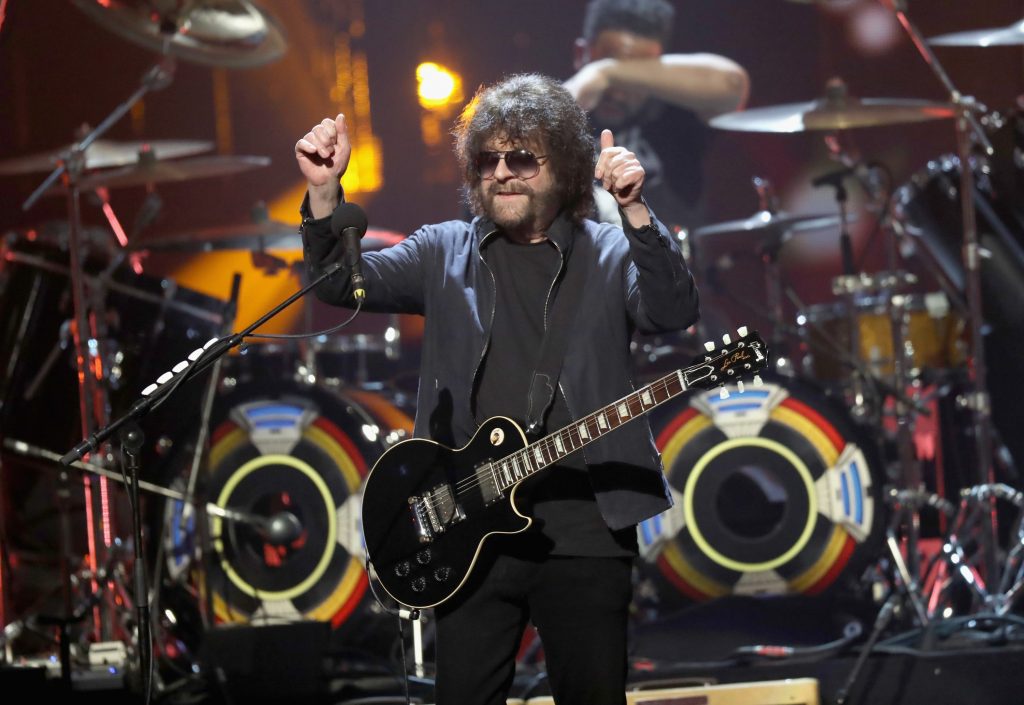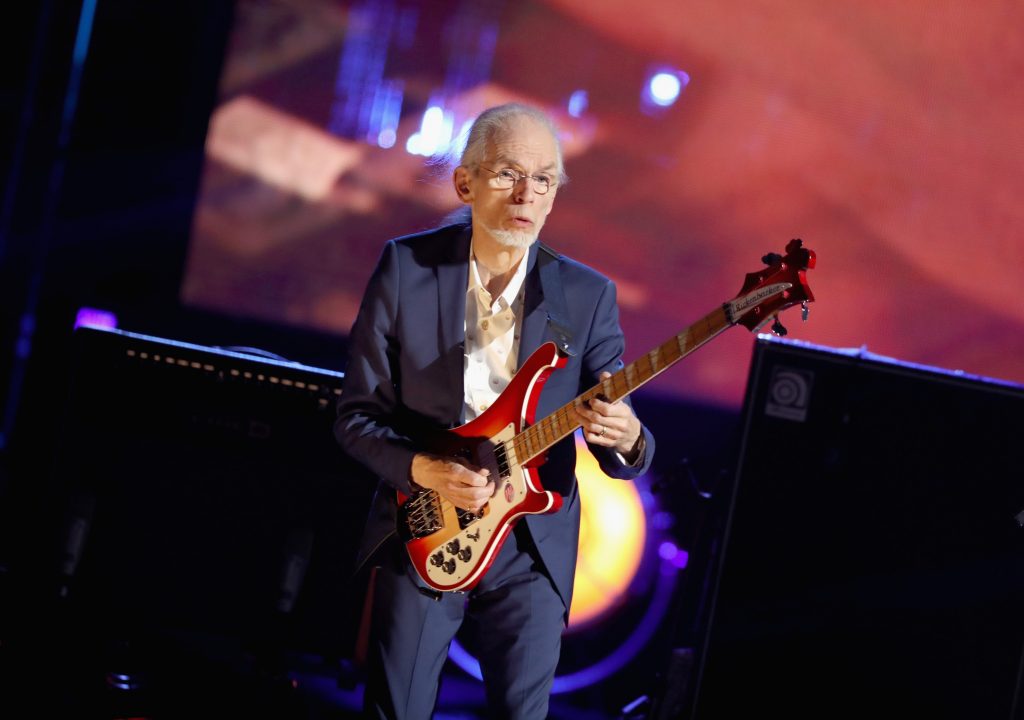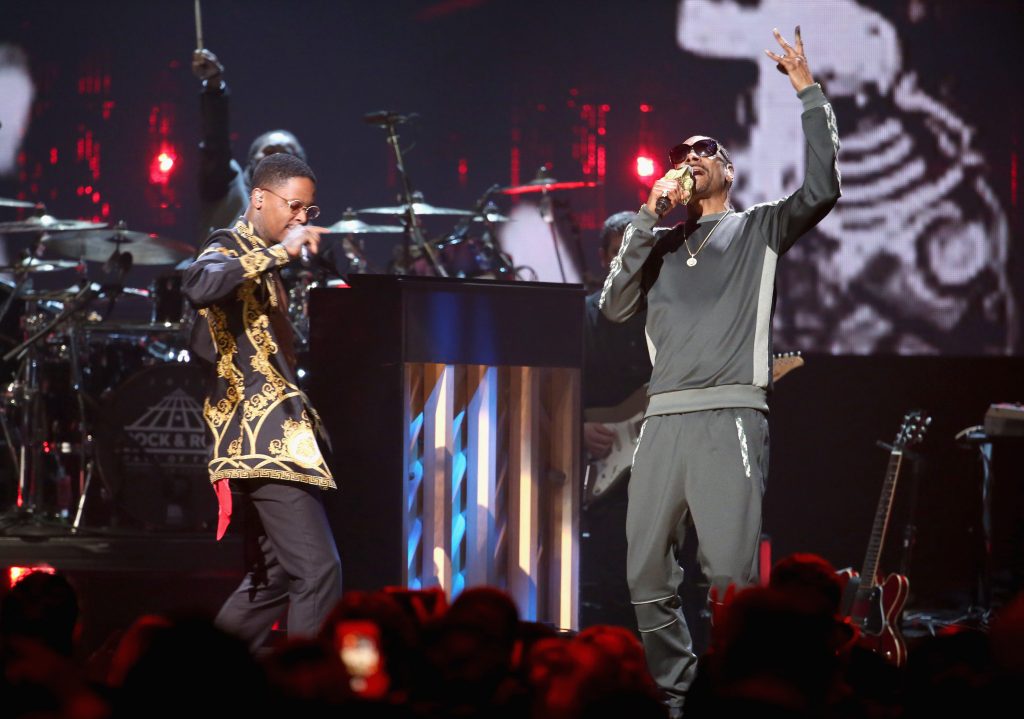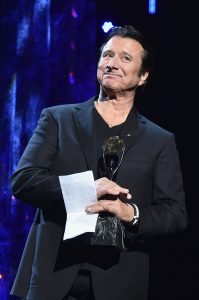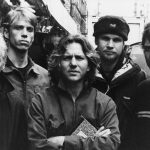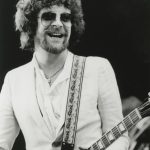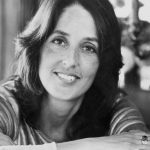April 10, 2020
by Carla Hay
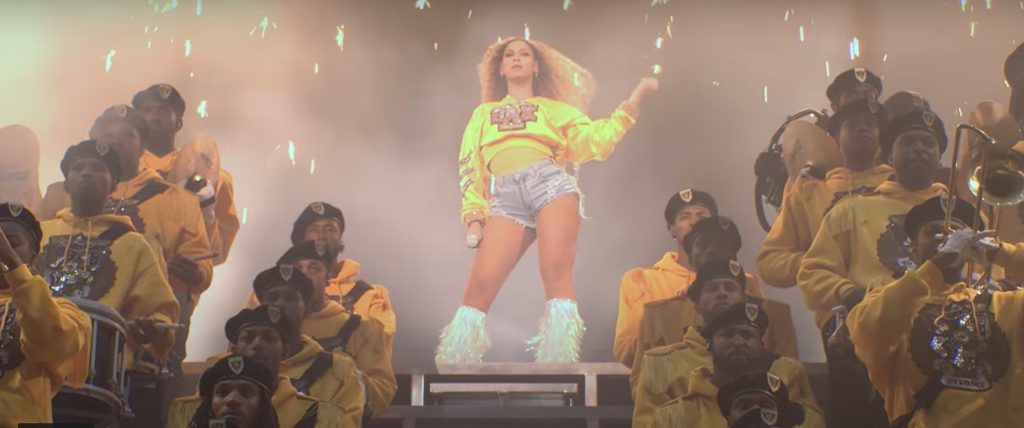
“Coachella: 20 Years in the Desert”
Directed by Chris Perkel
Culture Representation: This official documentary about the first 20 years of the Coachella Valley Music and Arts Festival (an annual event in Indio, California) includes interviews with a racially diverse group of Coachella employees, artists and other associates.
Culture Clash: Coachella was a money-losing festival in its first few years and has grown into a major money-making event in pop culture, even though some critics believe Coachella has become too trendy and high-priced.
Culture Audience: “Coachella: 20 Years in the Desert” will primarily appeal to music fans and people who want to learn more about Goldenvoice, the concert-promotion company behind Coachella.
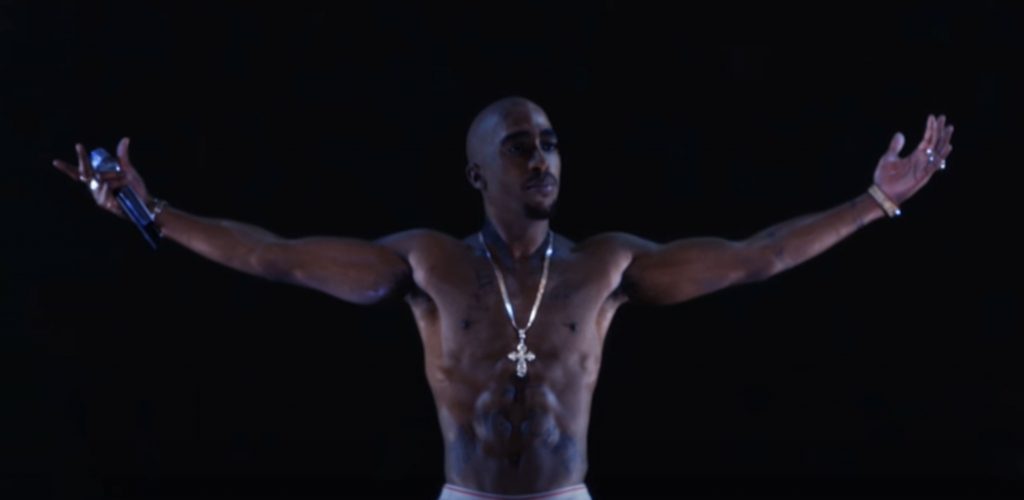
If you’re looking for shocking behind-the-scenes stories in the documentary “Coachella: 20 Years in the Desert,” then you’ll probably be disappointed. But this feel-good movie, directed by Chris Perkel, is a traditionally made chronicle of one the world’s most famous music festivals. The reason for this family-friendly portrayal of Coachella’s history (besides the fact that it’s available for free viewing on YouTube) is because Goldenvoice, the Los Angeles concert-promotion company behind Coachella, is one of the production companies that made this movie. In other words, this is not really an investigative documentary as much as it is a feature-length promotional video for Coachella.
Although some people in the movie talk about the festival’s early problems, there is absolutely no criticism of Coachella. Pretty much everyone who’s interviewed in the film gives praise to Coachella is some way. The movie’s biggest strengths are the musical performances that are in the film, as well as some interesting tidbits of information that aren’t very surprising, since most of the information in the movie has already been revealed in previous media coverage of Coachella.
The Coachella Valley Music and Arts Festival, like most pop-culture phenomena, didn’t start out as something that people immediately thought would be a hit. The festival was launched in 1999, the same year that large-scale music festivals got a very bad name because of the disastrous Woodstock ’99 Festival, which ended with riots, arson, assaults and thefts. The first Coachella, which took place in October 1999, was announced the Monday after Woodstock ’99 (which took place in August in upstate New York) got a lot of backlash for ending in such a catastrophe. And the site for Coachella was an unorthodox risk—the Empire Polo Club in the desert city of Indio, California, which is about 128 miles east of Los Angeles.
According to Goldenvoice president/Coachella co-founder Paul Tollett (the person with the most screen time in the movie), Coachella had two things going for it that most other large-scale music festivals did not: The promise of a laid-back California vibe and California’s sunny weather, which made the chances very slim that Coachella would be plagued by the kind of rain that often wreaks havoc on festivals that are east of California.
Electric Daisy Carnival (EDC) founder Pasquale Rotella, who says his business models for EDC and his other festivals were heavily influenced by Coachella, had this to say: “Some people who see Coachella now think, ‘Oh, that’s a no-brainer.’ Coachella is beautiful now [but] it was difficult. It took the concert promoter Goldenvoice several years to make it happen. And if it wasn’t for Goldenvoice’s roots, I don’t think Coachella would be what it is today.
“Coachella: 20 Years in the Desert” is divided into five chapters, with two chapters focused on specific music genres: “Chapter One: Origins,” “Chapter Two: The Early Years”; “Chapter Three: The Rise of Robots” (focusing on electronic dance music); “Chapter Four: The New Beats” (focusing on hip-hop); and “Chapter Five: The Next Generation.”
“Chapter One: Origins” has the history of the early years of Goldenvoice, which Gary Tovar launched in 1981 as an independent concert-promotion company whose specialty was booking punk and alternative rock bands at small venues in the Los Angeles area. Tovar says in the documentary: “When I started doing concerts, the punk rock that I did was too wild for some people.” Slamdancing and violence were very common at these shows, so many venues were reluctant to have shows that Goldenvoice was promoting.
By the mid-1980s, Goldenvoice’s influence grew to booking larger venues and helped launch the careers of acts such as Jane’s Addiction, Fishbone and Red Hot Chili Peppers. By the late 1980s and early 1990s, many of those acts had outgrown Goldenvoice, which was still mainly booking nightclubs and small theaters. But the relationships that Goldenvoice had with these artists were the foundation of what would become Coachella.
Tollett got his start booking ska shows in Pomona, California, in the mid-1980s. When he first met Goldenvoice’s Tovar, he thought Tovar would be an unfriendly rival, but “We hit it off instantly,” Tollett remembers. Later, “He gave me a box of flyers to pass out, and that was the first day that I worked at Goldenvoice.”
Dani Lindstrom, a longtime Goldenvoice employee, remembers that back in the late 1980s, the Goldenvoice office, which was located at the time above The Palladium, was “basically about five people booking shows.” Tollett adds that in the early 1990s, it looked like Goldenvoice was doing well, but the reality was that company was struggling financially.
And then, Goldenvoice experienced a major blow when Tovar was busted for what he describes in the documentary as his “side business”—smuggling and selling marijuana. In 1991, he was arrested and later sentenced to seven years in prison. The scandal effectively ended Tovar’s career as a concert promoter, but he refused to let Goldenvoice go bankrupt while he was in prison. Tovar sold the company to Goldenvoice employees Tollett and Rick Van Santen, who became presidents of the company.
The documentary names two events that also planted the seeds of Coachella. First, during Pearl Jam’s feud with Ticketmaster in 1993, the band was looking to do a gig in Southern California at a venue that wasn’t associated with Ticketmaster. Goldenvoice stepped in and booked Pearl Jam at the Empire Polo Grounds in Indio. The concert was a sold-out success (25,000 people attended), and it put the concert industry on notice that a show of this size could be done without Ticketmaster.
The other important event that helped give birth to Coachella was Goldenvoice’s involvement in the Organic Festival for rave music. After bands like Pearl Jam, Red Hot Chili Peppers and Rage Against the Machine became too big to book for Goldenvoice in the 1990s, Tollett says that the company began to focus more on booking rave acts. The concept of Coachella was for it to be a combination of a big rock festival and a rave party.
Moby, one of the performers at the first Coachella, says that he was one of the people who thought that bringing a “European-style festival to the U.S.” was an interesting idea, but at the time, he wasn’t sure if it was going to work in the California desert. Meanwhile, sound engineer Dave Rat of Rat Sound admits that he was one of many people who thought even the name Coachella was a bad idea at the time.
The documentary portrays Coachella as a groundbreaking large-scale U.S. music and arts festival for alternative rock and other artists whose careers were helped by college radio, but the movie doesn’t properly acknowledge that Lollapalooza had the same concept and did it years before Coachella existed. Lollapolooza was a touring festival that began in 1991 and continued to 1997, and was resurrected in 2003. Lollapalooza was then revived in 2005 as a non-touring festival, with the U.S. edition taking place in Chicago. It’s obvious from the timeline of when Lollapalooza was on hiatus that Coachella was created to fill the void left by Lollapaolooza.
Jane’s Addiction lead singer Perry Farrell, who co-founded Lollapalooza and performed as a solo artist at the first Coachella, is interviewed in the documentary. As influential as Lollapalooza was in the 1990s, even Farrell acknowledges that Coachella has a much higher profile in the consciousness of the media and pop culture: “You’re going to be judged, man, when you hit the Coachella stage, and it’s going to be talked about for the rest of the year.”
“Chapter Two: The Early Years” is one of the more fascinating parts of the documentary because it covers the years that didn’t get the level of media attention that Coachella does now. The headliners at the first Coachella Festival (which was only a two-day event back then) included Beck, Morrissey (footage of his performance is in the documentary), Rage Against the Machine, the Chemical Brothers, Tool, Farrell and Ben Harper.
Tollett says that Coachella was such a financial disaster in its first year (he estimates the festival lost between $850,000 to $1 million) that he had his bank card taken away and “I got kicked out of a bank.” He adds that Coachella was able to continue because of Goldenvoice’s good relationships with people in the music industry. “The only reason why we were able to keep going was because we had a good reputation,” he says, adding that people such as Lollapalooza co-founders Don Muller and Marc Geiger lent money to Goldenvoice.
The financial losses of the first Coachella caused the festival to go on hiatus in 2000. But then, the financial fortunes of Goldenvoice changed in 2001, when the company was bought by AEG Live (now called AEG Presents) for about $7 million. Goldenvoice then became part of the AEG subsidiary Concerts West, with Tollett and Van Santen retaining their presidential roles at Goldenvoice. AEG had recently constructed the Staples Center arena and wanted to have a major festival as part of its portfolio, so the company gave the go-ahead for Goldenvoice to revive Coachella. And the rest is history.
The documentary then goes over some of the biggest highlights in those early Coachella years. In 2001, there was the reunion of Jane’s Addiction, which Tollett says largely happened because Van Santen convinced the band to get back together. But the festival had a serious garbage-disposal problem that year because, as Tollett says, they didn’t have enough trash cans on the site.
However, the reunion of Jane’s Addiction at Coachella set a precedent for Coachella being a leading festival for bands to stage reunions. Wu-Tang Clan’s RZA says in the documentary that seeing Rage Against the Machine’s 2007 reunion performance at Coachella was when he knew that Wu-Tang Clan would eventually do a reunion show at Coachella, which happened in 2013. Other artists who have done reunion performances at Coachella include N.W.A., Pixies, Guns N’Roses and OutKast.
Coachella in 2002 was “the first year we didn’t make a mistake,” Tollett says. That year, Björk became the first female artist to headline at Coachella. Goldenvoice employee Stacey Vee remembers that the early 2000s were a great time for alternative rock bands, and that only helped Coachella. The documentary includes footage of 2003 headliners the White Stripes.
The year 2004 was the first time that Coachella made a profit, according to Tollett. Radiohead, Pixies and Kraftwerk were among the headliners. In 2005, there was another big alt-rock reunion: Bauhaus, which included lead singer Peter Murphy entering the stage hanging upside down like a bat for the song “Bela Legosi’s Dead.” The movie has footage of this performance. The documentary includes interviews with Bauhaus members Murphy (in an audio interview), Daniel Ash and David J, who remembers that Bauhaus wanted to release live bats during the band’s performance but couldn’t because it was illegal.
It was in the mid-2000s that Coachella became a very hot ticket. Coachella culinary director Nic Adler remembers in the first few years of Coachella, Goldenvoice was literally giving away tickets to him and his co-workers to attend. By the sixth or seventh year of Coachella, he says, those free tickets stopped. “There was that switch in the festival where you literally saw it was something you had to do, something you had to be at,” Adler comments.
Coachella in 2006 was most memorable for Madonna’s performance, which was booked on such relatively short notice that she couldn’t perform on the already-booked main stage. Instead, she performed in the tent for electronic dance music (EDM) artists. The documentary includes footage of Madonna performing “Hung Up” in the tent. Madonna was the first superstar to perform at Coachella, according to Goldenvoice’s Raymond Roker, the former editor-in-chief/publisher of URB magazine.
However, Madonna at Coachella didn’t happen without some criticism, as some of Coachella’s early fans thought that the festival wasn’t supposed to be for major pop acts. But at this point, so many Hollywood celebrities were flocking to Coachella, that it was inevitable that the festival would start having artists with more mainstream appeal. The documentary has some backstage footage from the 2007 Coachella that briefly shows actor Danny DeVito posing for a picture with singer Amy Winehouse—that pretty much says it all. Hollywood actress Rosanna Arquette, who did backstage interviews for Coachella for several years, says in the documentary: “It was the most favorite job I’ve ever had in my life.”
“Chapter Three: The Rise of Robots” covers the importance of Coachella to EDM acts. While many festivals in the 2000s were afraid to have a rave-style atmosphere, Coachella embraced it and helped boost the careers of many EDM acts. Coachella also helped usher in the era of DJs and other EDM artists staging big productions for their shows, with elaborate lighting and stunning visuals.
Two EDM performances at Coachella are singled out as major milestones: Daft Punk in 2006 (when the group performed a very “Close Encounters of the Third Kind”-inspired outer-space-themed set) and Tiësto in 2010, when he became the first EDM artist to perform on Coachella’s main stage. Steve Aoki raves about Daft Punk’s 2006 Coachella performance: “It changed people’s lives, including mine, forever.” Jason Bentley adds, “Nothing was the same after that performance.”
This chapter also mentions that Coachella influenced how EDM acts began to have more high-tech productions. Paul van Dyk says, “I’m not scared of technology. It’s something I use as a tool.” Tiësto says that the rise of EDM also coincided with the rise of social media: “Social media made a big difference. As soon as Facebook and Instagram blew up, EDM blew up. For years [EDM music] was held down by the people who controlled the [mainstream] media.”
But EDM at Coachella isn’t just about elaborate light shows or movie-quality images on big screens. Also included in this chapter are commentaries from actor Idris Elba (who moonlights as a DJ) and Nina Kraviz, who praise the low-tech vibe of Coachella’s Yuma Stage, which doesn’t have any big screens. Meanwhile, Diplo says that even though headlining sets happen at night, “Sunset is the best time to play Coachella.”
“Chapter Four: The New Beats” covers the evolution of rap and hip-hop at Coachella. Goldenvoice’s Roker notes that in Coachella’s early years, the rap acts booked at the festival tended to be those that were played on college radio and had a largely white fan base. (Jurassic 5 is named as one example.) Roker says, “It took a while for the culture to merge.”
Coachella went from booking mostly independent rap acts to acts that had major crossover success on the pop charts. Kanye West (who showed up 20 minutes late for his first Coachella performance in 2006) is cited as one of the first major crossover rap acts to perform at Coachella. Jay-Z had the biggest breakthrough as the first rap act to headline at Coachella, which he did in 2010.
According to Tollett, Jay-Z was selected for the headlining spot after Goldenvoice promoters saw him perform as a replacement for headliner the Beastie Boys at the 2009 All Points West Festival, which was also a Goldenvoice show. When Jay-Z opened the show with the Beastie Boys’ “No Sleep Till Brooklyn” (a rap song with a rock beat), the people at Goldenvoice knew that he could do a show that could appeal to Coachella’s audience, which consisted of mostly rock fans at the time.
As the 2010s became the decade that rap and hip-hop began to have more of a presence at Coachella, so too did social media. It was in this decade that Instagram became the main social-media platform for Coachella attendees to document their experiences and fashion choices. In 2011, YouTube began livestreaming Coachella for the first time.
By 2012, Coachella had become so popular (with the event usually selling out the first day it went on sale) that Goldenvoice did something that was truly groundbreaking at the time: Coachella was extended for a second weekend, with the same acts performing in the same time slots for each weekend. Tollett says that there were many naysayers to this idea at the time, but it turned out to be a major success and catapulted Coachella to become the world’s top-grossing festival, in terms of ticket sales. Although attendance numbers and ticket sales were not mentioned in the documentary, in 2017 (the last year that Coachella publicly reported this information), Coachella was attended by 250,000 people and grossed $114.6 million.
The year 2012 was also a milestone year for Coachella because it featured what Tollett calls “The single most popular thing that ever happened at Coachella.” During Dr. Dre and Snoop Dogg’s performance at Coachella’s first weekend, a surprise hologram of the late Tupac Shakur appeared on stage and performed. The hologram made news worldwide and became a massive sensation on the Internet.
Dylan Brown, who created the hologram, explains in the documentary how precise the movements had to be, even down to raising an eyebrow on the hologram. “We just wanted to do it right. We wanted to be respectful to the [Shakur] family and to the fans.”
Roker adds that after this groundbreaking hologram performance, “The genie was never going back in the bottle. It established the show as part of popular culture.” Ice Cube, who was a peer of Shakur’s in the vital 1990s West Coast rap scene, comments on the Coachella hologram: “I was happy for [Dr. Dre] and happy for Tupac being able to be on stage.”
“Chapter Five: The Next Generation” covers how Coachella has evolved to stay relevant to the mostly young people who flock to the event. Gone are the days when alt-rock artists were the majority of the headliners. Coachella is now more diverse than ever before, with pop, hip-hop, Latino and Asian artists becoming more prevalent at Coachella, compared to the festival’s early years. Some of the artists highlighted via performance clips in this chapter include Ariana Grande, Travis Scott, Rosalía and Blackpink.
Roker comments on Coachella changing to fit trends in music: “That’s been the hardest pill to swallow for some of the older fans.” He notes that many of Coachella’s youngest stars share some common characteristics: “They’re coming with fashion, wealth, bravado and carefree aggression.”
As for the definitive Coachella performance in the late 2010s, people interviewed in the documentary mention Beyoncé’s show-stopping 2018 Coachella extravaganza, which was made into the 2019 Netflix documentary “Homecoming: A Film by Beyoncé.” (She was also the first black woman to headline at Coachella.) Beyoncé’s performance was such a media sensation that fans affectionately renamed Coachella 2018 as “Beychella.”
Roker says of Beyoncé’s 2018 Coachella performance: “She was a woman on a mission. She came there with a script. The performance was a State of the Union for her, and she was going to deliver it.”
And the high profile of a Coachella performance means that artists often feel the need to surpass each other with elaborate productions. The documentary mentions Kanye West’s 2019 Sunday Service performance at Coachella (with hundreds of choir singers and dancers) as one of those over-the-top productions. Goldenvoice literally built a mountain on the field at his request, since a stage was too small for what West had in mind. Goldenvoice producer Jason Brown says that hundreds of trucks were needed to bring in all the dirt and grass to construct the mountain.
Coachella’s increasing diversity and its ability to evolve with the times (instead of sticking to the same musical formula from the festival’s early years) is ultimately one of the reasons why it will continue to thrive, according to artists interviewed in the documentary. Beck, one of the performers at the first Coachella, says about the festival: “If I’m in town, I usually go as a fan. It’s everything that’s happening in music at the moment.” Shepard Fairey adds that the musical variety of Coachella is its biggest draw: “It’s not one cohesive genre. It’s just more cohesive in the idea that ‘good is good.'”
And although headliners get the majority of the media attention at Coachella, most of the music fans at the festival are also there to discover new music or see lesser-known artists they wouldn’t normally see at a regular concert. Diplo, who’s performed at Coachella several times, comments on Coachella expanding beyond the festival’s original template of rock, EDM and some hip-hop: “It’s always been a festival for discovery anyway, so we’re reaching sort of a global cusp. Every year is a metamorphosis.”
“Coachella: 20 Years in the Desert” does a great job of covering the festival’s variety of music, and the concert footage is well-edited with very good sound mixing. (Try to watch this movie on the biggest screen possible.) But what’s missing from the documentary is any coverage of the “arts” at the Coachella Valley Music and Arts Festival. There have been many amazing art installations at Coachella over the years, so it would have made the documentary truly comprehensive if a little bit of time had been devoted to including a behind-the-scenes look at the festival’s art.
And curiously, the documentary doesn’t mention that Coachella co-founder Van Santen died in 2003, until a brief obituary dedication that’s flashed at the very end (“Rick Van Santen, 1961-2003”). In the documentary, the Goldenvoice people don’t talk about how Van Santen’s death (he passed away from flu complications) affected them and Coachella. Maybe it was too much of a downer for this documentary, which clearly wants to present only a positive and upbeat side to Coachella.
Since this is a Goldenvoice-produced documentary, it comes as no surprise that there’s also no mention about Coachella’s controversies, such as complaints of overcrowding and sexual harassment of attendees. Despite Coachella’s ongoing problems that this documentary doesn’t really want to address, the festival has undoubtedly become a major part of pop culture.
As pop star Billie Eilish says in the beginning of the documentary: “Everybody knows what Coachella is. If you don’t care about music, you know [about Coachella].” Goldenvoice’s Roker has this conclusion about Coachella’s evolution: “The fact that it represents a fuller picture of culture, that’s the bottom line.”
YouTube Originals premiered “Coachella: 20 Years in the Desert” on April 10, 2020.
T


